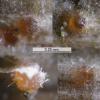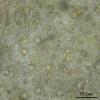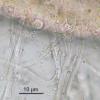
09-12-2025 12:06
 Andgelo Mombert
Andgelo Mombert
Bonjour,Je recherche l'article concernant Hypobryo

08-12-2025 18:59
 Lothar Krieglsteiner
Lothar Krieglsteiner
.. found by a seminar-participant, I do not know t

08-12-2025 21:04
Mark Stevens"Hello everyone,I'm relatively new to microscopy (

08-12-2025 17:37
 Lothar Krieglsteiner
Lothar Krieglsteiner
20.6.25, on branch of Abies infected and thickened

07-12-2025 16:07
Arnold BüschlenHallo, ich habe in einer Moos-Aufsammlung (epiphy

16-03-2014 22:00
Hello,I found this species a few months ago but ha

08-12-2025 13:39
Thomas Læssøehttps://svampe.databasen.org/observations/10572899
Nectriella on Typha 1
Hans-Otto Baral,
16-07-2008 17:39
 Hi Christian & Amy and everybody
Hi Christian & Amy and everybodyI promised Amy to collect Hypocreales, here are two on Typha. I collected in a forest pond here in Tübingen dead upright Typha latifolia shoots standing in the water, with the outer sheaths completely dry, and in about 20-40 cm above water level were minute orange dots which I first thought to be orbiliaceous. It was a further surprize that there are two species.
Now, I think one of them must be a Nectriella because the perithecia are permanently subepidermal. There are long thin hyphae around the perithecial wall but no true hairs. Pale yellow oil drops are seen in the wall cells. Interestingly the warts on the spores disappeared in heated KOH. I considered N. paludosa or N. curtisii, mainly because of the substrate. The size of the living spores would well match the data in Rossman & Samuels 1999, but not the size of the dead spores.
Perithecia 120-200 µm diam, subepidermal. Sp. *17-19.5(-21) x 4.3-5.5 µm, distinctly finely & densely warted-punctate, KOH heated 14-17 x (3.5-)3.8-4 µm!, smooth!
Zotto
Hans-Otto Baral,
16-07-2008 17:41
Christian Lechat,
16-07-2008 18:08

Re:Nectriella on Typha 1
Dear friends,
Zotto, maybe it is Nectriella dacrymycella, I studied one collection of this species three years ago, collected by Bruno Coué on Iris.
Can you please send us an image (micro) of Hyphae or hairs ?
Amitiés :)
Zotto, maybe it is Nectriella dacrymycella, I studied one collection of this species three years ago, collected by Bruno Coué on Iris.
Can you please send us an image (micro) of Hyphae or hairs ?
Amitiés :)




